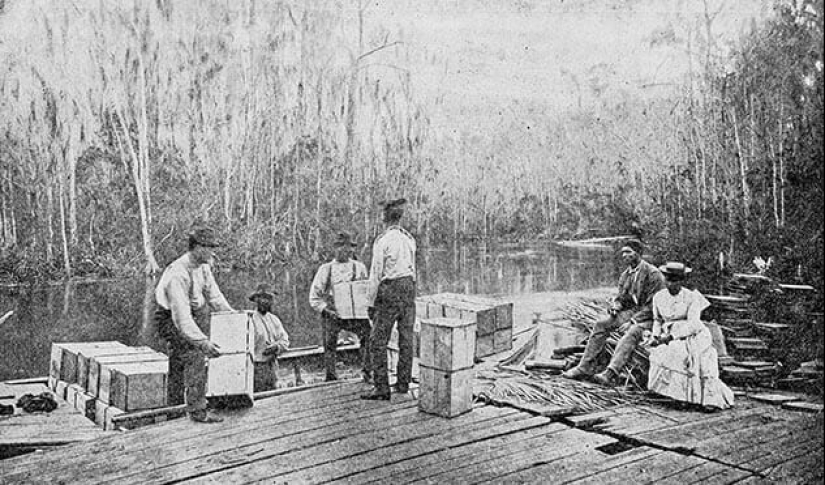10 false ideas about slavery in the United States
Categories: History | North America | World
By Pictolic https://pictolic.com/article/10-false-ideas-about-slavery-in-the-united-states.htmlSlavery existed in the British American colonies and the United States from 1619 to 1865. Today, this is a difficult topic for Americans, but, despite everything, it is a significant part of American history. Over the decades, people have developed a lot of misconceptions about who owned slaves, where they came from, how many there were and how they lived. Here are some "myths" about slavery in the United States that historians have debunked.


In fact, most Southerners did not own slaves. According to the 1860 census, the states of Mississippi and South Carolina were the largest in terms of slave ownership – 49% of their population had slaves. In Texas, slavery was legal only for twenty years, from 1845 to 1865. But by 1860, 27% of Texans owned 182,566 slaves. At the same time, these 27% held 68% of government positions. Owning slaves then equated to wealth and status – mostly they were owned by officials, but many families sought to reach the same level.

During the period from the 16th to the 19th century, approximately 12 million Africans were brought to the countries of America. At the height of the slave trade, one in six slaves came from Senegambia, a confederation that included the West African countries of Senegal and the Gambia. About a quarter of all slaves came from this confederation. Another quarter fell on West-central Africa – the territory of modern Angola, Congo and Gabon.

About 388,000 African slaves were sent to the United States, which is about 3.6% of their total number. This is negligible compared to the number of slaves that were sent to South America and the Caribbean. Only 4.8 million people were sent to Brazil to work in gold mines and sugar plantations. Another 1.2 million were sent to Jamaica.

In 1776, slavery was legal in each of the 13 colonies of North America. Slave labor was crucial in the construction of structures (and even the city of Boston), slaves worked in homes and on farms. Since 1804, laws began to appear abolishing slavery. It is believed that the southern states protested most against these laws. However, although the northern states adopted similar laws, they did not immediately free the slaves on their territory – the liberation took place gradually to avoid outbreaks of discontent. In New York, for example, a law was passed that children were considered hired servants until they reached the age of majority.

Most of the slaves worked in agriculture, especially on cotton, tobacco and rice farms, but about 10% worked in cities. They were engaged in a variety of activities-from firefighters and railway employees to blacksmiths. In some cases, plantation slaves were allowed to move to the city for a season to earn money. Most of the" urban " slaves were women who performed household duties in families. In wealthy families, there were several such slaves for the whole house. Even middle-class families could afford such a slave.

Depending on the position and workload, the slaves had a different amount of free time. On the rice and tobacco plantations of South Carolina and Georgia, each slave was given a daily task – when it was completed, the slave spent the rest of the day as he wanted. Some owners gave the slaves a weekend off, and made gifts in the form of things or cash. During the holidays, slaves were also given dances, sports competitions with treats and drinks.

Slaves could also earn extra money, especially if they wanted to buy their freedom. Some owners had a system in which slaves could perform additional work for rewards. This was especially common if the slave was an experienced specialist in some craft. With the accumulated money, many of them bought farm animals or were engaged in the production of handicrafts, and then sold them on the market. The slaves used their money to buy food, kitchen utensils, clothes, toiletries, tobacco and alcohol.

After the Haitian revolution of 1804, when, thanks to the literacy of slaves, they managed to hold the only successful uprising of black slaves in history, many slave owners from the United States became worried. Most southern states have introduced laws prohibiting the education of slaves, prohibiting them from learning to read and write. However, these laws also had many opponents – someone needed slaves to perform secretarial tasks, write letters and submit documents, for which reading is important. Baptist churches also opposed the law – it was important for them that slaves could read the Bible. Thus, many simply ignored the laws, continuing to teach slaves to read and write.

In the 1600s and 1700s, it was considered unethical for a Christian to own another Christian. Therefore, slaveholders not only dissuaded their slaves from converting to Christianity, but also did everything possible to hide their fears that this would contribute to the movement for the abolition of slavery. For these reasons, they gave them the freedom to practice any religion. On the other hand, some slaveholders promoted the conversion of their slaves to the Christian faith, because they believed that Christian slaves could become better workers.

Many slaves remained true to their traditions, and to some extent adapted them to American culture. The slaves kept in touch with other Africans, honoring family values. And they also continued the spiritual traditions of their kind – for example, on the plantations you could meet a "magician" who practiced West African spiritual traditions. For a certain fee, such people could cure a disease, expel a spirit, or cast a curse with the help of rituals.
Keywords: USA | North America | History | World | Past | Slavery | Facts | Interesting | Historical pictures
Post News ArticleRecent articles

In the fall of 1972, Bill Yates traveled through the countryside in the vicinity of Tampa, Florida. At that time, he was studying ...

Severe cold weather does not give up its positions. We offer you to admire the magical photos of winter Europe, because snow and ...
Related articles

In the fall of 1972, Bill Yates traveled through the countryside in the vicinity of Tampa, Florida. At that time, he was studying ...

When a person is in a life-threatening situation is awful, but even worse when it happens to a child. 11-year-old American Terry ...

Remember how broke the "unbreakable" scoop? The photo preserved in the photo album of almost every family! A selection of vintage ...

Vladimir Lyubarov is an artist from the countryside who paints pictures of real life. But he brings amazing characters, birds, and ...